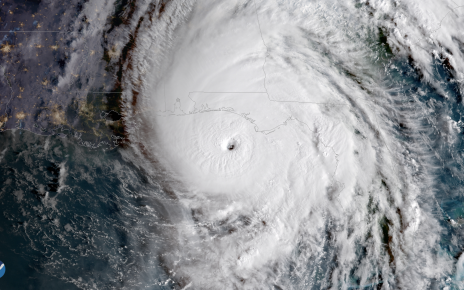COVID-19 surged across the U.S. South in July and August, becoming the newest epicenter of the pandemic. During the summer of 2020, more than 20 percent of the entire world’s new COVID-19 cases occurred in the southern states led by Florida, Georgia, Louisiana, Texas and Arizona.
Reasons for the summer rise in cases have been debated, but for me it was relatively straightforward: the White House Coronavirus Task Force insisted that the individual states lead and chart their own COVID-19 destiny, while the federal government would back them up with manufacturing support. This was a failed strategy from day one. Individual states lacked the expertise to contain the virus, and they needed the smoke screen of the Department of Health and Human Services for the governors to justify unpopular measures for virus containment
Despite a southern summer peak of COVID-19, there was still a chance to quell the epidemic. By launching a new national containment strategy across the U.S., we could have dramatically reduced virus transmission for the remainder of the year. In July, the number of new cases of COVID-19 was already way down in New England and other northern states, even though far more work was required in the South. Possibly, in some metro areas in Texas, Florida and Arizona, we might have needed to implement shutdowns similar to what New York City endured in March and April. But the bottom line was that with hard work, we could have contained this virus and reached a level low enough to open schools or colleges with peace of mind.
Unfortunately, my proposed “October 1 plan” went nowhere. Despite some media attention, the White House and its Coronavirus Task Force showed little interest. There was no new federal action.
We are now seeing the consequences of refusing to implement a national plan or roadmap. A third peak of COVID-19 may be underway in the Upper Midwest, especially in Wisconsin and North and South Dakota. I am worried that a fall surge will be devastating, with an increase in the new cases from 30,000 per day to 40,000 and rising thereafter. The case fatality rates might also rise. In March and April, the mortality rate of COVID-19 in New York City rose to levels comparable to those in Western Europe—a fact that I attributed to the large numbers of patients overwhelming the city health system. However, newer preliminary information suggests that mortality rises in colder climates possibly as a result of higher virus transmission linked to large numbers of people indoors or virus survival in the cold.
Now, our president was hospitalized with COVID-19 following a large outbreak in the White House Rose Garden where many participants refused to wear masks in a ceremony nominating Judge Amy Coney Barrett to the U.S. Supreme Court. The specter of an ailing U.S. president and a White House in disarray is yet another shock to the American people.
I am hopeful that President Trump will make a full recovery, but also that the White House fully recognizes the dangers of COVID-19. Indeed, without receiving experimental therapies Trump might not have survived his illness. Could this awareness reset the nation? Until now, the White House has minimized the public health consequences of COVID-19, while dismissing the urgencies of masks and other measures
It is never too late to contain COVID-19 and with resolve and commitment, it is possible for the president to charge his task force with halting COVID-19 transmission, or to delegate this mission to the CDC. Regardless of the outcome of the presidential election, for the duration of 2020 a reinvigorated U.S. president and White House have the capacity and means to chart a new course for the nation, making COVID-19 interruption a national priority. I’m not optimistic, but I remain eternally hopeful.
The Institute for Health Metrics and Evaluation currently projects that more than 360,000 Americans will die by the close of 2020, roughly 150,000 more than the current death toll. But it does not have to be this way. An “autumn reset” promoting the use of masks, contact tracing and social distancing could still save 100,000 lives. This must be our highest national priority.



